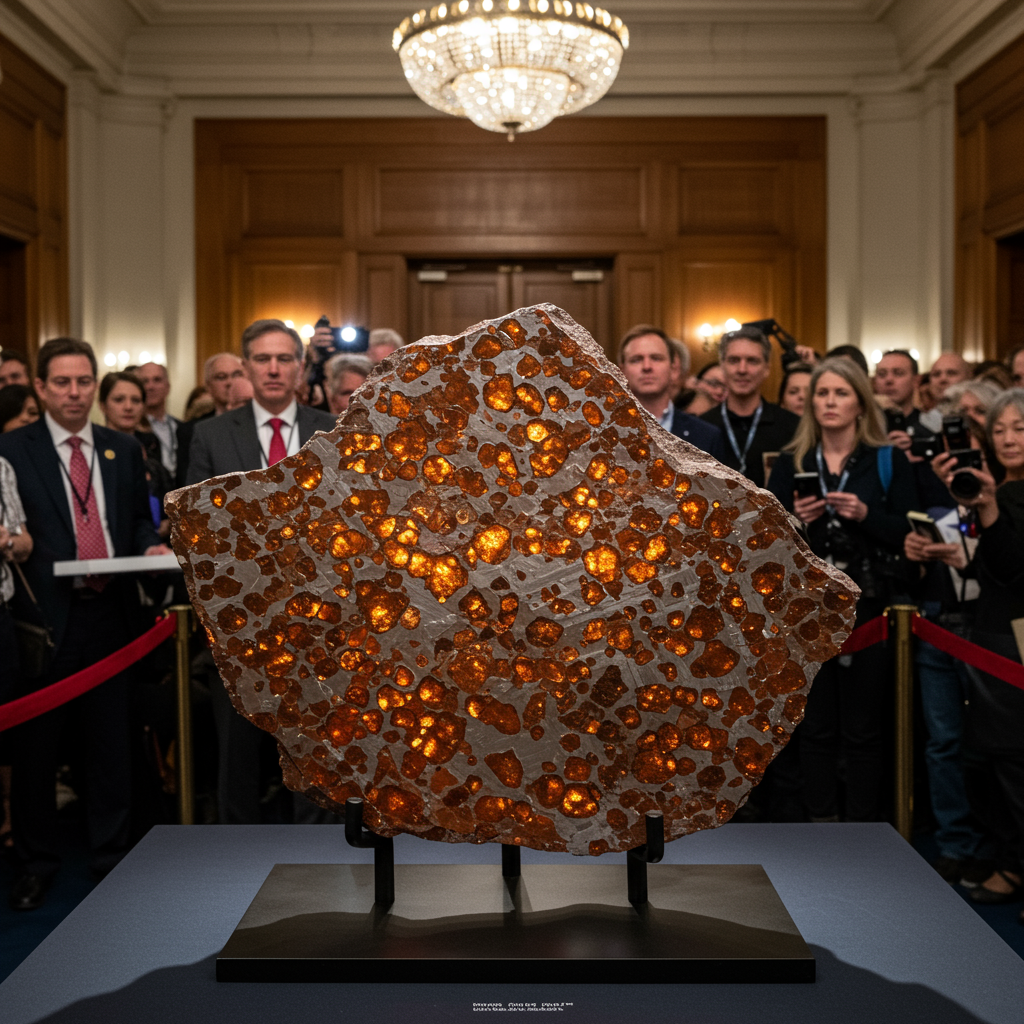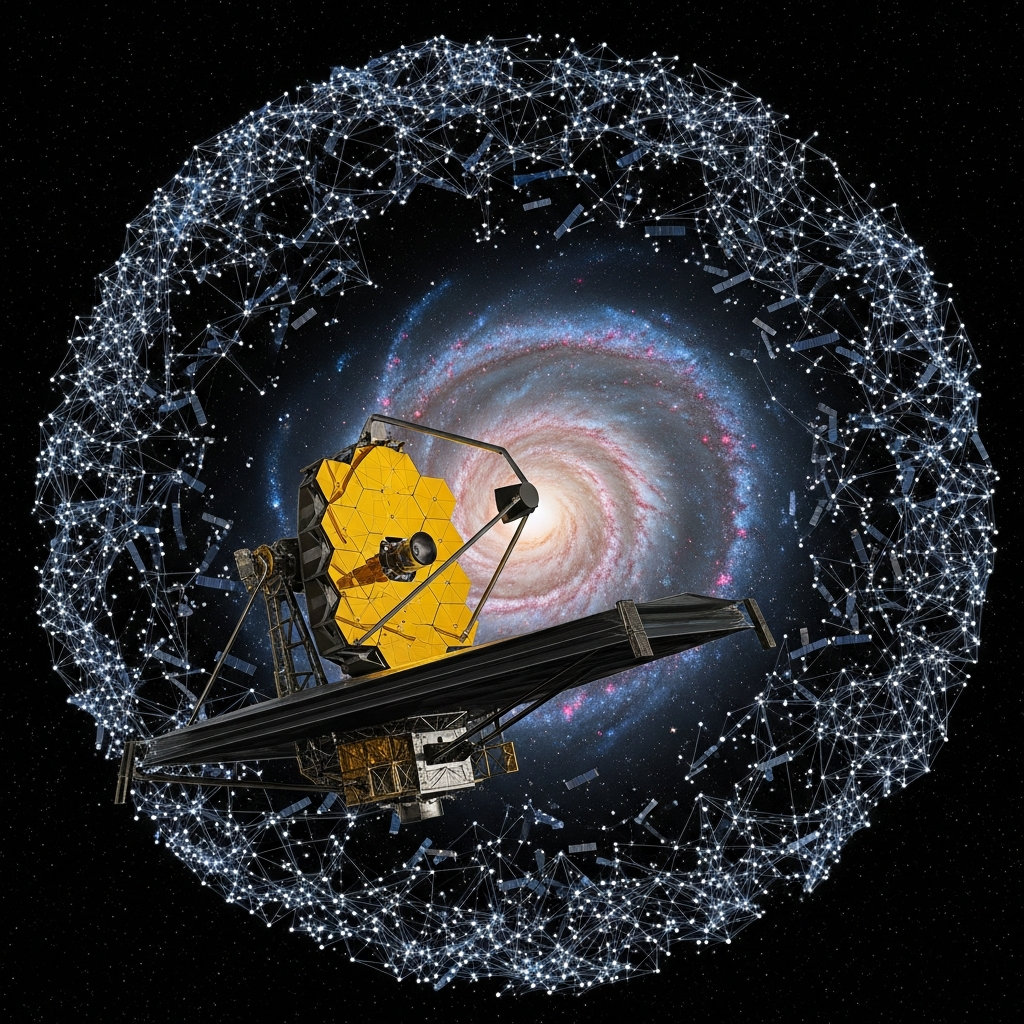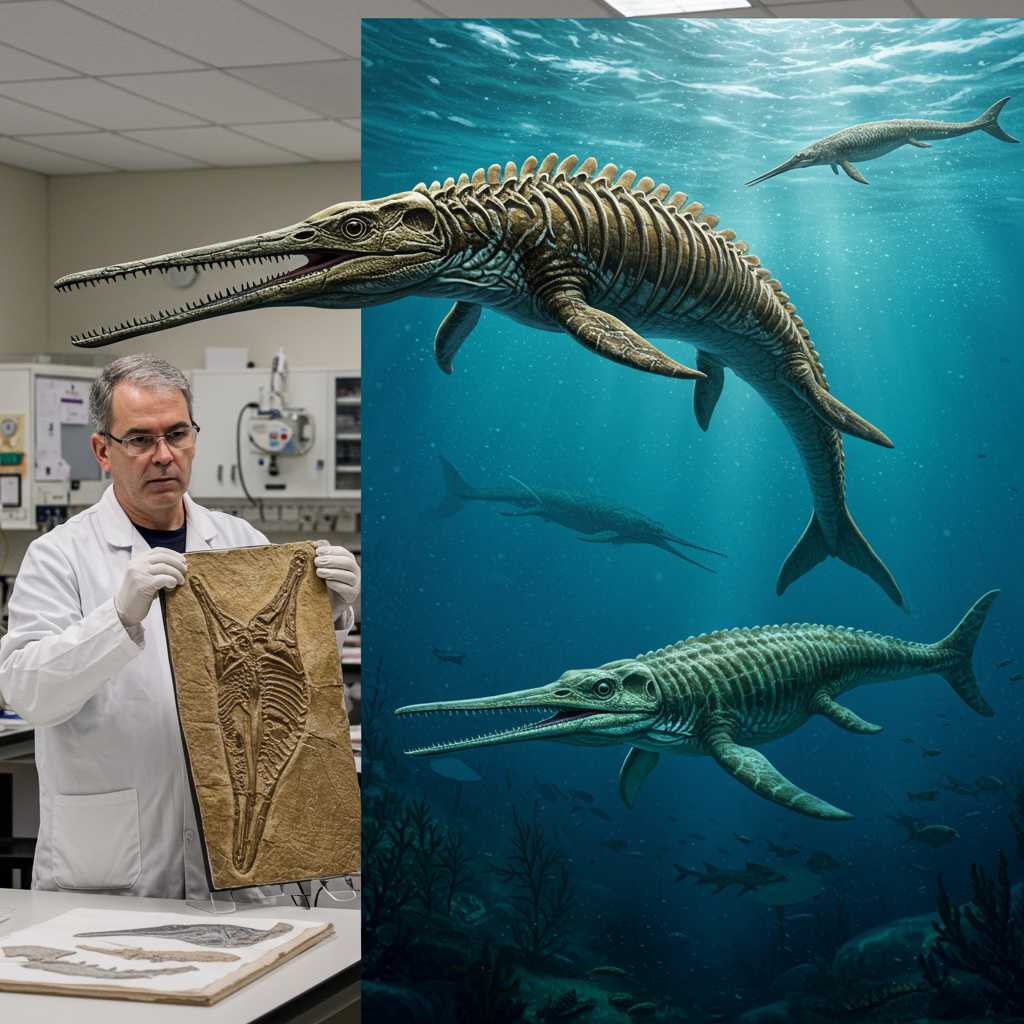Imagine holding a piece of another world in your hands – a rock that traveled millions of miles across the vacuum of space, surviving a fiery plunge through Earth’s atmosphere to land right here. Now, imagine that rock is a literal chunk of Mars. One such extraordinary specimen, the largest piece of the Red Planet ever found on Earth, is heading to auction with an eye-watering price tag.
This isn’t science fiction; it’s the upcoming sale at Sotheby’s, where a colossal Martian meteorite is set to change hands for potentially millions of dollars. The event highlights the incredible rarity and scientific value of these cosmic visitors, offering a unique opportunity for a collector to own a piece of our planetary neighbor.
A Cosmic Journey Ends in the Sahara
The star of the upcoming auction is a meteorite officially designated NWA 16788. This remarkable specimen holds the distinction of being the single largest piece of Mars residing here on Earth. Weighing in at just over 54 pounds (approximately 24.5 kilograms), its sheer size sets it apart from the vast majority of discovered space rocks.
Its journey began eons ago, likely when a powerful asteroid impact struck the surface of Mars. The force of the collision was so immense that it ejected rocks and debris clear of the planet’s gravitational pull, sending them hurtling into the solar system. After traversing an estimated 140 million miles through the void of space, NWA 16788 eventually intersected Earth’s orbit and plummeted through our atmosphere. Most meteors burn up completely during this fiery descent, but this substantial piece endured the intense heat and pressure, surviving the trip to become a meteorite.
The incredible odds of such a journey successfully concluding with a landing on Earth are, quite literally, astronomical. As Cassandra Hatton, Sotheby’s vice chairman of science and natural history, put it, the chances of this specific rock making the trip from Mars to Earth are astonishingly small. Its terrestrial arrival appears to be relatively recent, with Sotheby’s describing it as a “relative newcomer.”
The Rarity and Value of a Martian Visitor
Why would a rock command a price of up to $4 million? The answer lies in its extraordinary rarity. While over 77,000 officially recognized meteorites have been discovered on Earth, a minuscule fraction originated from Mars. According to Sotheby’s, only about 400 of these cataloged specimens, representing roughly 0.6% of the total, are confirmed Martian meteorites.
NWA 16788 alone accounts for approximately 6.5% of all known Martian material currently present on Earth. This makes it an exceptionally significant find, both for collectors and scientists. The total amount of material we have from Mars and the Moon on Earth is incredibly limited; Sotheby’s once noted in a collector’s guide that all known specimens from both bodies combined would fit within the cargo hold of a large SUV. This perspective underscores the extreme scarcity of genuine samples from our closest celestial neighbors.
The meteorite was discovered in 2023 in the remote Agadez Region of Niger, located within the vast Sahara Desert. Desert environments are often prime locations for meteorite hunting because the dry conditions help preserve the rocks, and their dark crust stands out against the lighter sand or rock formations.
More Than Just a Rock: A Scientific Treasure
Beyond its immense value on the collector’s market, NWA 16788 represents a priceless resource for planetary scientists. Studying meteorites from Mars allows researchers to analyze the planet’s geology and history without the massive cost and complexity of sample-return missions like those NASA is currently pursuing with its rovers.
Meteorites offer tangible samples that can reveal details about Mars’s mineral composition, volcanic activity, internal structure, and even the history of water on the planet. While rovers like Curiosity provide incredible on-the-spot analysis and imagery – recently capturing close-ups of unique, water-formed ridges on Mount Sharp, for example – physical samples returned to Earth allow for more sophisticated analysis using advanced laboratory equipment not feasible on a rover.
NWA 16788 is seen as a “massive dataset” waiting to be unlocked. Analysis of its composition could provide new clues about the specific region on Mars it originated from, the conditions present there billions of years ago, and the processes that shaped the planet. These insights complement data gathered remotely by spacecraft orbiting Mars or rovers exploring its surface, helping scientists build a more complete picture of our dynamic planetary neighbor.
Complementing Robotic Exploration
The scientific study of Martian meteorites on Earth goes hand-in-hand with the exploration efforts conducted by missions like NASA’s Curiosity and Perseverance rovers. While rovers can analyze rocks and soil in situ and gather environmental data, meteorites offer unique perspectives. For instance, gases trapped within the glass pockets of some Martian meteorites can be analyzed to match the composition of Mars’s atmosphere, providing crucial validation for remote atmospheric studies.
Furthermore, the specific mineralogy and isotopic ratios found in meteorites can reveal details about Mars’s early magnetic field, volcanic past, and interactions with water or ice over time. Discoveries made by rovers, such as the evidence of past groundwater activity seen in the calcium sulfate veins within Martian ridges, raise new questions that can potentially be addressed by studying physical samples like NWA 16788 back on Earth.
The Auction Scene
Sotheby’s is no stranger to auctioning off pieces of space history and geological marvels. The auction house regularly features meteorites in its sales, recognizing the strong demand from private collectors, museums, and scientific institutions. The upcoming sale is scheduled for July 16th in New York City.
Prospective buyers and curious members of the public have a rare opportunity to view NWA 16788 up close before the auction. The meteorite is on public display at Sotheby’s New York galleries until July 15th. This viewing period allows potential bidders to appreciate the scale and significance of this extraordinary object. While NWA 16788 is the largest meteorite ever found from Mars, it is worth noting it is not the largest meteorite ever discovered on Earth; NASA records a much larger one, weighing over 100 tons, that fell in Namibia.
The high estimate for NWA 16788 reflects not only its size and rarity but also the growing interest in space exploration and the tangible connection these objects provide to other worlds. Owning a Martian meteorite is perhaps the closest most people can come to visiting the Red Planet itself.
Frequently Asked Questions
What is NWA 16788 and why is it significant?
NWA 16788 is the largest meteorite ever found on Earth that originated from the planet Mars. Weighing over 54 pounds, it is scientifically significant because it represents a tangible piece of Martian geology. Its extreme rarity – Martian meteorites make up less than 1% of all known meteorites – combined with its record size, makes it highly valuable to both collectors and scientists, offering a “massive dataset” to study Mars.
How did the NWA 16788 meteorite get from Mars to Earth?
Scientists believe NWA 16788 was launched from the surface of Mars by a powerful asteroid impact. The impact ejected the rock into space, where it traveled an estimated 140 million miles. It then entered Earth’s atmosphere, survived the fiery descent, and landed in the Sahara Desert in Niger in 2023, overcoming “astronomically small odds” to complete its journey.
Where and when can someone potentially buy this Martian meteorite?
The NWA 16788 Martian meteorite is being put up for auction by Sotheby’s in New York City. It is currently on public view at Sotheby’s galleries in New York until July 15th. The auction itself is scheduled to take place on July 16th, where the meteorite is expected to fetch up to $4 million.
A Piece of the Red Planet
The auction of NWA 16788 represents a fascinating intersection of science, history, and the exclusive world of high-value collecting. This single rock carries within it secrets of Mars’s deep past, a testament to the violent forces that shaped our solar system, and the incredible luck required for such a journey to end on our doorstep.
While the search for life on distant exoplanets continues with powerful telescopes like the James Webb Space Telescope, and rovers meticulously explore the Martian surface, physical samples like NWA 16788 remind us that sometimes, pieces of the universe come to us. For the fortunate bidder, owning this extraordinary meteorite means acquiring not just a rock, but a direct, tangible connection to the mysteries of the Red Planet.




